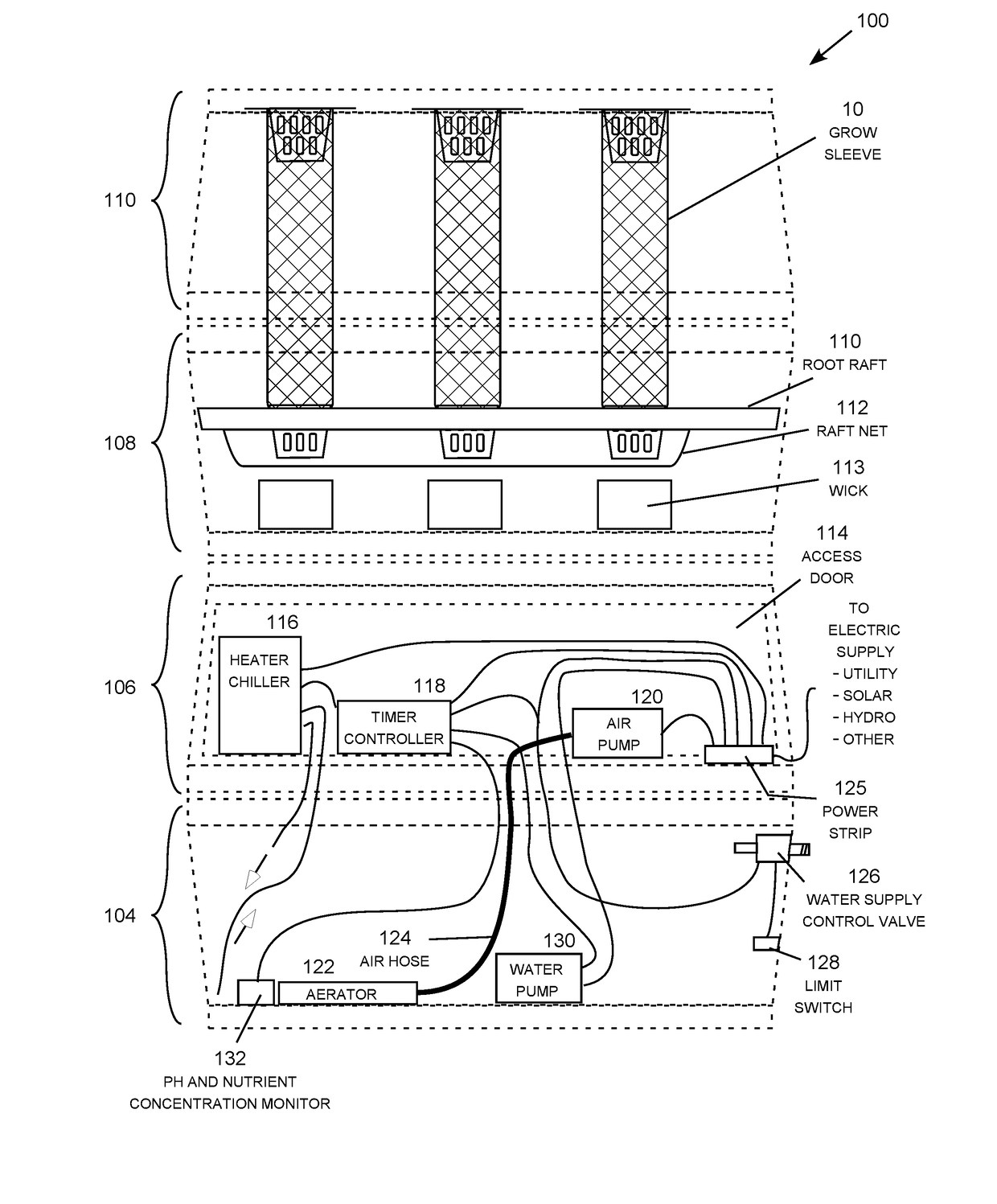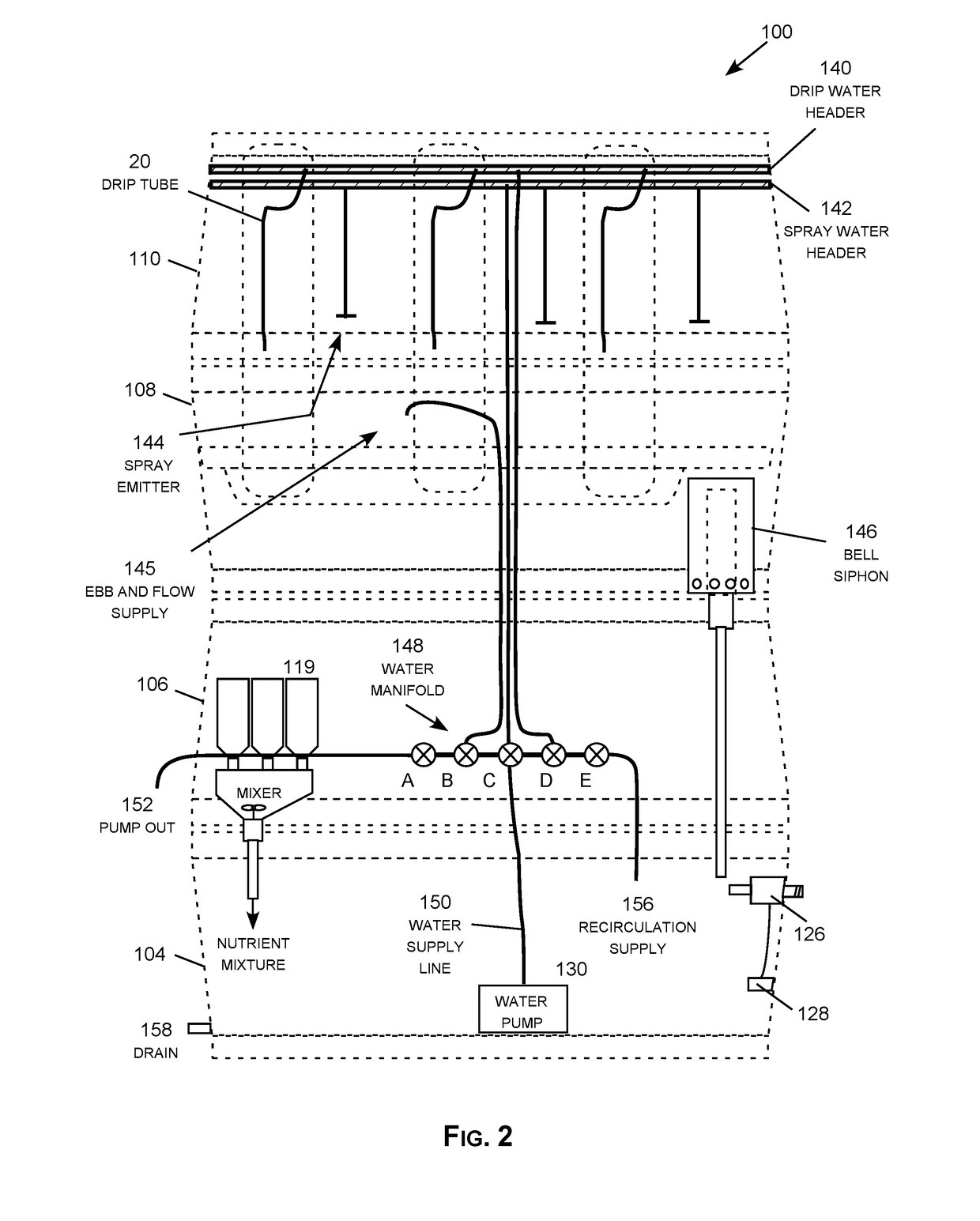Hybrid Hydroponic Plant Growing Systems
a hydroponic plant and hybrid technology, applied in the field of hybrid hydroponic plant growing systems, can solve the problems of hydroponic system suffering, hydroponic system hysteresis, and inability to have home gardens and small farms in urban communities, so as to prevent fertilizer runoff, optimize plant nutrition, and reduce water consumption.
- Summary
- Abstract
- Description
- Claims
- Application Information
AI Technical Summary
Benefits of technology
Problems solved by technology
Method used
Image
Examples
Embodiment Construction
[0035]Embodiments of the invention may be realized in innovative hybrid hydroponic growing units that utilize containerized growing media and multiple hydroponic techniques to enhance plant growth at different stages of plant development. The use of containerized growing media allows the units to be utilized regardless of the availability of arable soil or irrigation water. Multiple hydroponic techniques, such as drip system, nutrient wicking, ebb-and-flow, and / or deep water culture are combined to optimize plant nutrition at different stages of plant growth. The units may use any type of fertilizer, such as conventional solid fertilizer pellets or powder, controlled release fertilizer prills, hydroponic nutrient solution, organic solids, compost, “tea bags” containing any of a wide variety of typically organic materials, or any other suitable fertilizer. Incremental fertilization, water monitoring, and drain systems are designed for easy use by non-professional gardeners. Water rec...
PUM
 Login to View More
Login to View More Abstract
Description
Claims
Application Information
 Login to View More
Login to View More - R&D
- Intellectual Property
- Life Sciences
- Materials
- Tech Scout
- Unparalleled Data Quality
- Higher Quality Content
- 60% Fewer Hallucinations
Browse by: Latest US Patents, China's latest patents, Technical Efficacy Thesaurus, Application Domain, Technology Topic, Popular Technical Reports.
© 2025 PatSnap. All rights reserved.Legal|Privacy policy|Modern Slavery Act Transparency Statement|Sitemap|About US| Contact US: help@patsnap.com



